Stretching For Functional Fitness – Expert Tips 2026
Author:
Reviewed by:
(21 years of Oly Lifting experience)
Unlock your full potential by engaging with our experts and community! Have questions about your fitness journey or looking for expert advice on weightlifting techniques? Don’t hesitate — leave a comment below and Zinaida Bondarenko will provide a personalized answer and insights to help you reach your goals.
Torokhtiy is reader-supported. Some links are affiliate links, and we may earn a commission at no extra cost to you. See our disclosure page for details.
Stretching is a low-impact exercise that helps the body become more flexible and mobile. Regular stretching not only helps us achieve athletic goals – it also improves our daily lives by making us more comfortable in our bodies. Here’s why it’s important to do stretching for functional fitness and which functional fitness stretching exercises are recommended by experts.
The most common functional fitness stretching routine is Dynamic stretching. Dynamic functional fitness stretches are done before the main workout as part of the warmup routine to prepare the body for exercise. Dynamic stretching is done in motion to raise your body temperature, activate muscles, and stimulate joints.
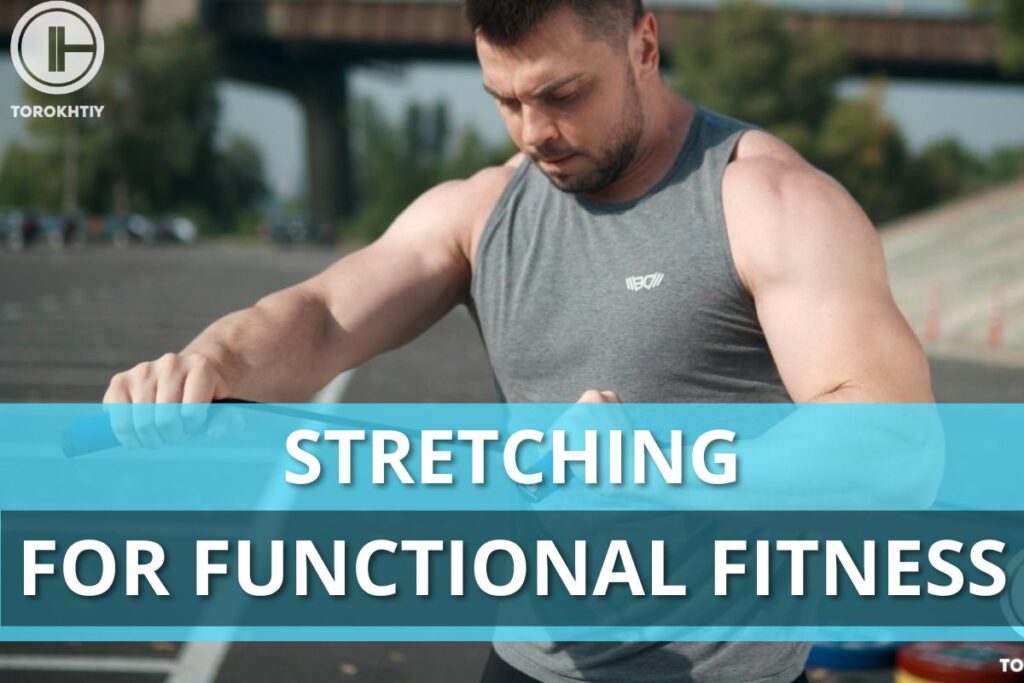
What Is Stretching?
Stretching is a physical exercise primarily done with the goal of increasing flexibility and range of motion in a particular muscle or muscle group. It is often done before or after (or both) going into your main physical workout, regardless of if you’re doing weightlifting, cardio, HIIT, functional fitness, or even something like a dance class.
The most common type of stretching is standard or Static stretching. It’s usually done either after a workout or as the main workout itself. When you stretch, you put stress on your muscles, tendons, and ligaments, which pushes lactic acid out of muscle fibers. As the muscle structure recovers, your body becomes more comfortable with the position thanks to muscle memory. Many people attempt Static stretching before the main workout.
However, according to a Harvard Medical School report, stretching before an exercise when your body is cold and muscles are tight has a higher chance of injury. For this reason, it’s recommended to do Dynamic stretching for warmups.
The Best Functional Fitness Stretching Exercises
Here are some pre-workout Dynamic functional fitness stretching exercises you should do that don’t require equipment.
We recommend start performing 20 repetitions or 10 on each side for your functional fitness stretching routine.
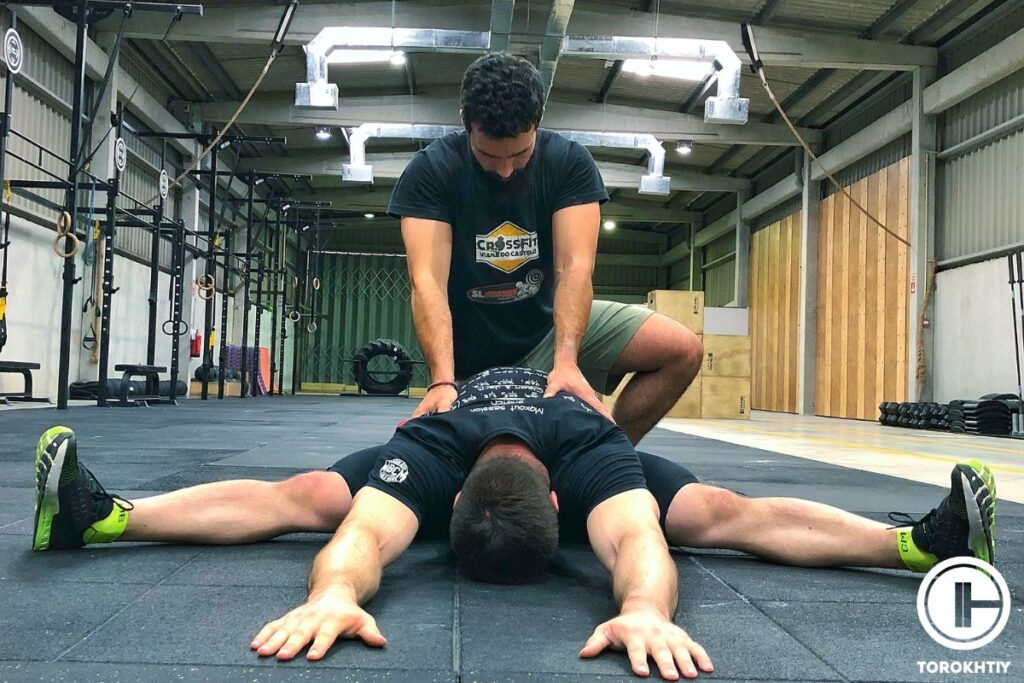
Spinal Rotations
Stand up straight and extend your arms to the side horizontally to the ground. Keeping your torso still, hips, and legs still, slowly rotate your spine from left to right. Try rotating further as you get more comfortable. To activate the upper spine, turn your head towards the side you’re rotating to and look at your arms.
For maximal effect, always keep your gaze locked on your hand as you rotate.
The final goal is to be able to rotate your spine so that your upper naturally turns fully sideways to a nearly 90-degree angle.
Controlled Squats
Start from a standing position with your legs spread just outside hip width. Slowly perform a regular bodyweight squat motion controlling your descent. Hold for 2-3 seconds until your body is comfortable in the squat position, then rise back up.
For a more advanced and dynamic version, extend your arms forward or above your head and keep them tight in position as you perform the squat.
Forward Lunges
Stand up straight with your head, shoulders, knees, and toes in line. Step out forwards with one leg – the length of the step should be just before you reach your maximum extension while still comfortably standing on your full foot. Slowly start bending your knee in the leg opposite of the one you took a step forward or back with. Control your descent and go directly downwards at a 90-degree angle.
Follow us!

Free!
Get a 2-week Weightlifting Program as a bonus for the subscription to kickstart your training plan!

Free!
As you go down, the extended leg will naturally start bending in the knee as well for balance. Your final position should be with your extended leg knee being in a horizontal line with your hips, with the other leg forming an L shape with your knee slightly above the ground and in a horizontal line with the heel. From a side view, both legs should end up bent at 90 degrees. Make a stop in that position before you feel comfortable and stable, then go back up using the following the same path with the opposite motion.
For a more advanced exercise, simply alternate between the legs (left-right, left-right) instead of doing one leg at a time.
Backward Lunges
Same principle as the forward lunge except one leg takes a step back and the motion starts with it bending at the knee first. The final position is reverse of the forward lunge – with the leg that stepped backward ending up in the L shape position with the knee slightly above the ground and in line with the heel.
Wrist Stretch
With how much time we’re spending typing on our phones and computers, it’s become increasingly important to take care of our wrists. To do an extensor stretch, raise one arm straight in front of you with your fingers pointing outwards. Using your other hand, bend your extended hand at the wrist downwards and upwards into a 90-degree angle and hold in each position for a few seconds.
For a more advanced exercise, simply rotate the extended arms palm to face outwards as you’re bending it.
Ankle Stretch
When an athlete fails to warm up, ankle injuries are arguably the most common. A cold ankle can be sprained with something as simple as slightly losing balance. There are various ankle stretch exercises, however, the most common version of functional fitness stretches is done from a standing position.
Step out with one leg. Next, rotate the other foot over the tip of your toes and extend your ankle forward until you feel the tension. Your toes should be bent inwards and your nails effectively touching the ground.
For a more advanced exercise, rotate your heel outwards as if you’re trying to touch the ground with it.
🔻Test Your Mobility Before Starting the Program
Mobility is crucial because it directly impacts your performance, technique, and overall safety.
Complete 3 simple tests to evaluate your current mobility.
Our Program Includes:
- 📺 80 Videos for every exercise:
Unique movements, supported by detailed graphics and voice-over. - 📆 36 Workouts x 30 minutes each:
12-weeks plan can be used as standalone program or as a pre-/post-workout training. - 📊 Tests to track you progress:
Make simple tests in the beginning and after finish to elevate your result. - 🏋️♂️ Made by Olympian:
Designed by a Champion, under the guidance of PhD in sport science and physiotherapist. - 💲One-time payment:
No monthly or any other recurring payments. One payment, life-time usage.
FAQ
What Type Of Stretching Do Functional Fitness Athlets Do?
As discussed, the best stretches for functional fitness are Dynamic stretches. Functional fitness training is designed to be fast-paced and engage the full body, and it applies that philosophy to stretching as well.
Performing Dynamic stretches as part of your warmup has been proven to increase flexibility and reduce stiffness.
Should You Stretch Before Functional Fitness?
You should always do a warmup and Dynamic stretch before a functional fitness workout.
Studies have shown that proper warmup and stretching significantly lower the chance of sports-related injury.
Conclusion
Stretching is a necessary form of exercise for everyone, regardless if you’re actively physically training or not. Mobility is not only important for sports and fitness, but for performing everyday physical tasks as well. Experts recommend performing dynamic stretching for functional fitness athletes before every workout.
Do you perform stretching exercises before or after your workout routine? I’d love to hear your thoughts in the comments. Remember to follow me on social media for more fitness content
Also read:
- Snatch Mobility
- Elbow Mobility Exercises
- Upper Body Stretch
- Lower Back Mobility Exercises
- Overhead Squat
- Trapezius Stretches
- 6-Week Squat Program
- Squat Program 12 Week
- Squat Program
References:
- The Benefits of Dynamic Stretching and How to Get Started // HealthLine: https://www.healthline.com/health/exercise-fitness/dynamic-stretching
- How and When to Include Static Stretching in Your Workout // HealthLine: https://www.healthline.com/health/exercise-fitness/static-stretching
- Ask the doctor: Stretching before exercise // Health Harvard: https://www.health.harvard.edu/staying-healthy/ask-the-doctor-stretching-before-exercise#:~:text=Stretching%20a%20healthy%20muscle%20before,and%20less%20likely%20to%20tear.
- Dynamic Stretching Has Sustained Effects on Range of Motion and Passive Stiffness of the Hamstring Muscles // National Library of Medecine: https://www.ncbi.nlm.nih.gov/pmc/articles/PMC6370952/
- Warming-up and stretching for improved physical performance and prevention of sports-related injuries // PubMed: https://pubmed.ncbi.nlm.nih.gov/3849057/
Why Trust Us?
With over 20 years in Olympic weightlifting, strength training, nutrition coaching, and general fitness our team does its best to provide the audience with ultimate support and meet the needs and requirements of advanced athletes and professional lifters, as well as people who strive to open new opportunities and develop their physical capabilities with us.
By trusting the recommendations of our certified experts in coaching, nutrition, and sports training programming, as well as scientific consultants, and physiotherapists, we provide you with thorough, well-considered, and scientifically proven content. All the information given in the articles concerning workout programming, separate exercises, and athletic performance, in general, is based on verified data.
The product testing process is described in more detail here.
Author: Zinaida Bondarenko
Coach, Physiotherapist
Physical rehabilitation experience: 10 years
Zinaida was a member of the national team of Ukraine in rhythmic gymnastics, accumulating 15 years of professional sports experience. She holds certifications in functional training, rehabilitation, kinesiotherapy, specializing in working with athletes across various domains: recovery, rehabilitation, functional and mobility training, General Physical Preparedness (GPP), as well as injury prevention through specific program design. Moreover, she focuses on athlete and coach education to enhance performance and prevent injuries.
Reviewed by: Oleksiy Torokhtiy
Olympic Weightlifting Champion, PhD in Sport Science
Best Results: Snatch – 200 kg,
C&J – 240 kg
Oleksiy Torokhtiy is a professional athlete boasting 20 years of experience in Olympic weightlifting. With multiple European and World titles under his belt, he has showcased his prowess in two Olympic Games (Beijing 2008 and London 2012). Upon concluding his illustrious career, Oleksiy dedicated himself to coaching. By 2022, he had conducted over 200 weightlifting seminars worldwide. He is the visionary behind an international sportswear and accessories brand known for its motto, “Warm Body Cold Mind.” Additionally, he is an esteemed author and the creator of a series of training programs and eBooks.

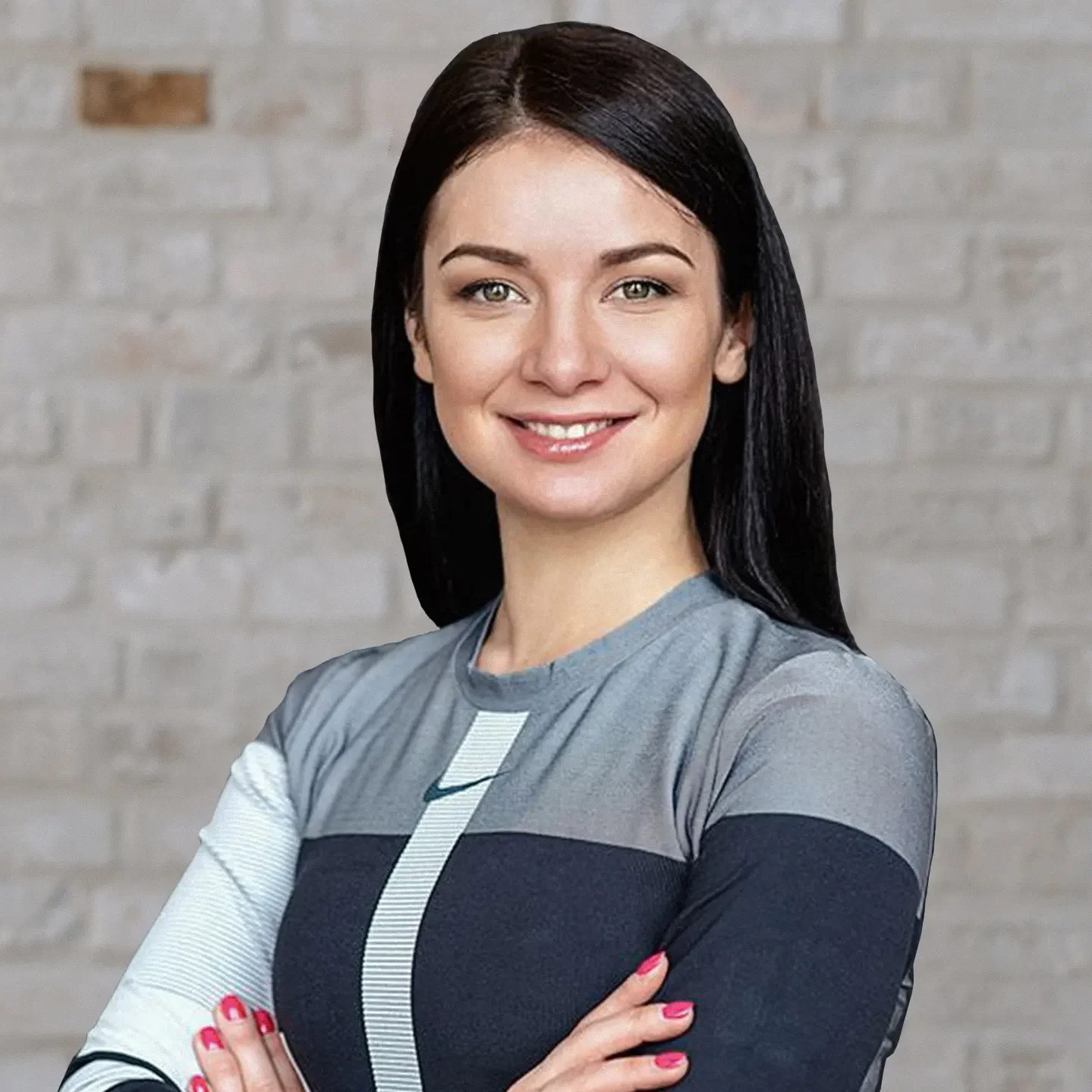


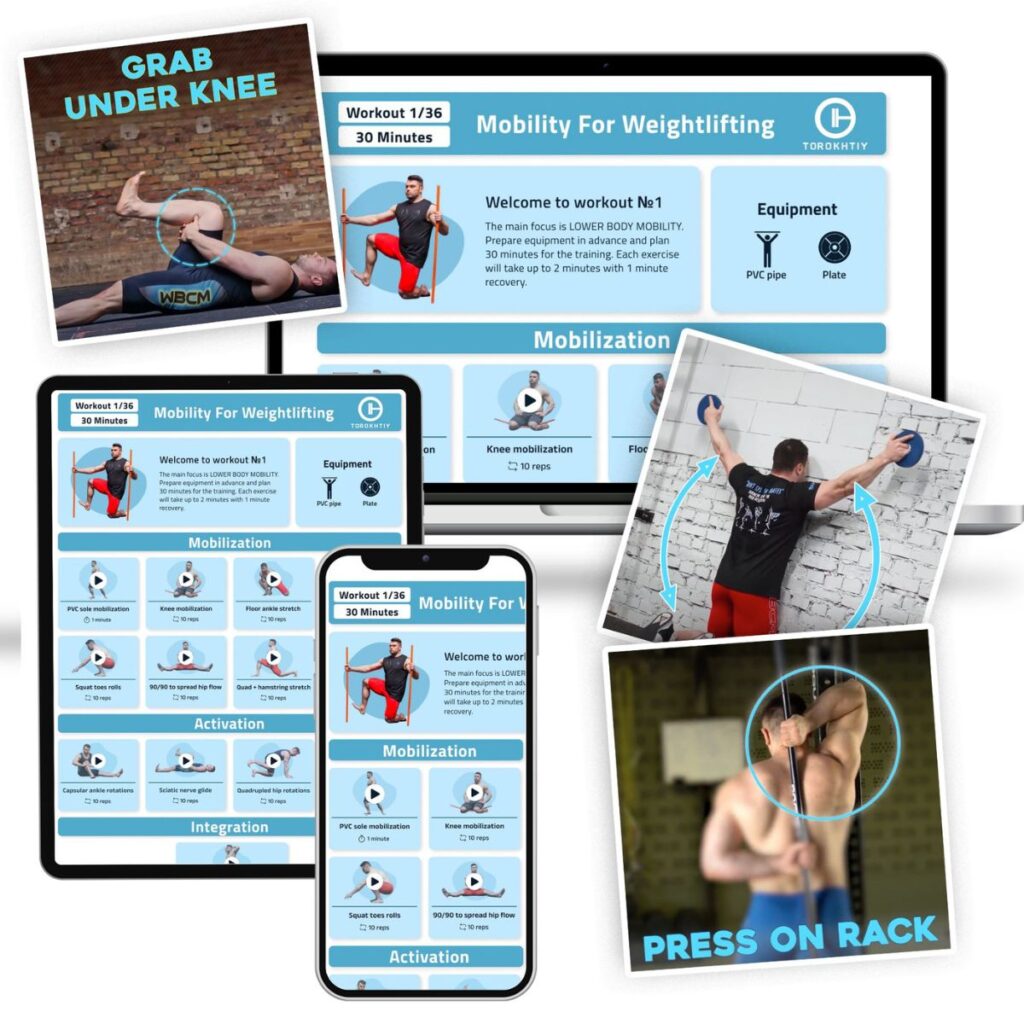
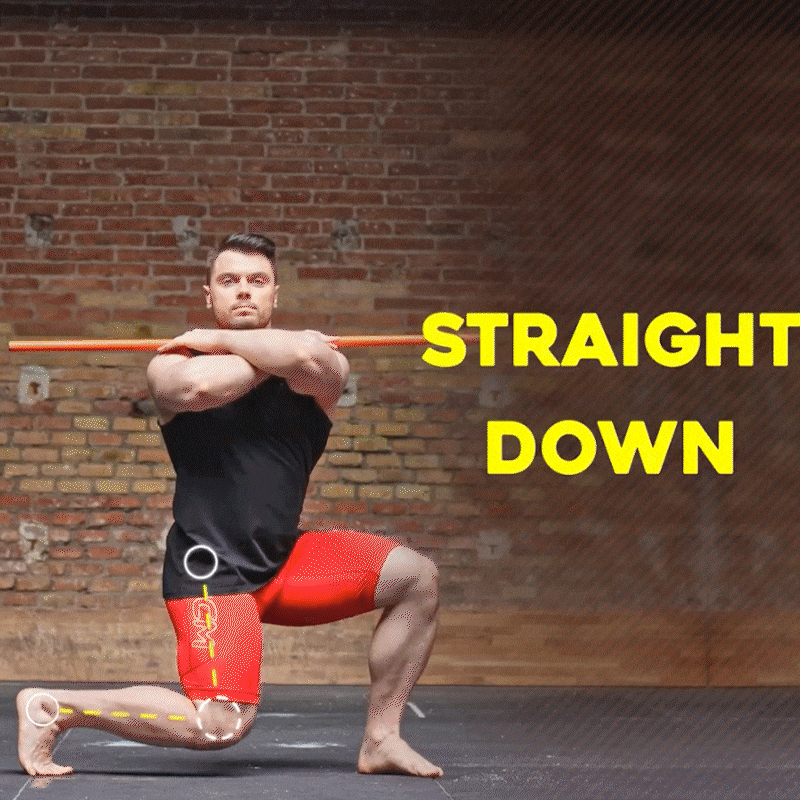
Still have questions after reading our article? Unlock your full potential by engaging with our experts and community! Don’t hesitate — leave a comment below and Zinaida Bondarenko will provide a personalized answer and insights to help you reach your goals.